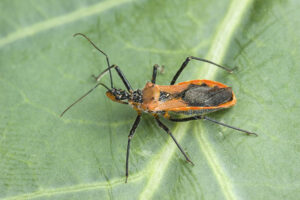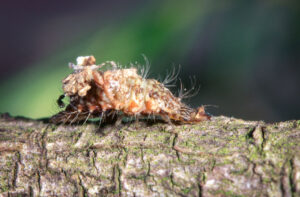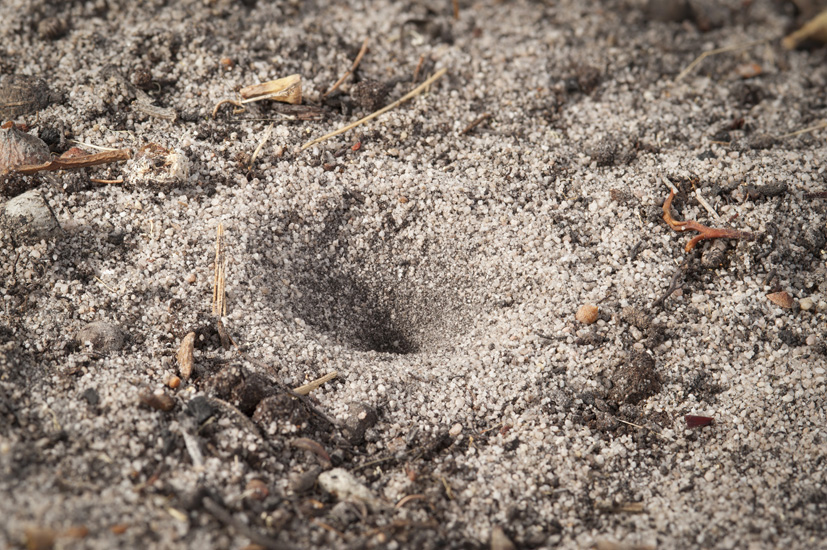Some insects are tool users
By Denis Crawford
Most people are familiar with mammals and birds that use tools, but they may not be aware that some insects also use tools.
I first became aware of animals using tools through the work of Jane Goodall in Africa during the 1960s. I’m sure we have all seen that amazing footage of a chimpanzee turning a twig into a ‘fishing tool’ for termites. Since then, it was discovered that the New Caledonian crow (Corvus moneduloides) does something similar. The crow fashions a stick into a tool for extracting beetle larvae from logs. It wiggles the stick around in a beetle tunnel to get the grub to bite the stick, so it can be pulled out and eaten.
There is much disagreement in the scientific community on the definition of tool use in animals. If you look it up online, you will find many definitions of tool use. Here is one definition that makes sense in the context of this article. “Use of an external object as a functional extension of mouth or beak, hand or claw, in the attainment of an immediate goal”.

You might think that insects are not ‘sophisticated’ enough to use tools. It makes much more sense that a primate like a chimpanzee might use a stick to fish for termites, or a ‘smart’ crow may use a stick to fish for beetle grubs. But some insects do indeed use tools.
Antlions use a simple tool, sand, to help catch their prey. Antlions are the larvae of lacewings of the family Myrmeleontidae, a name derived from the Greek words myrmex (ant) and leon (lion). Antlions build conical pits in sheltered sandy areas and lie buried at the bottom with their jaws protruding waiting for small insect prey, usually ants, to tumble in. In this context (the pit) the sand is not a tool. But the loose sandy sides of the pit prevent prey from escaping, and the antlion flicks grains of sand at the struggling ant to dislodge it. Now the sand is a tool! The prey is then seized in the antlion’s powerful jaws and sucked dry (the jaws of antlions are twin curved hollow sucking tubes).
The larvae of another family of lacewings (Chrysopidae) also use simple tools. These larvae have small spines on their backs upon which they place the remains of their last meal and other debris as camouflage. This allows them to sneak up on prey without being seen, and also provides defensive cover from insect predators such as birds and spiders. Growers should be familiar with these larvae. They are commonly known as green lacewing larvae, and they are voracious predators of aphids and other small soft bodied prey. The larvae of other common lacewings – brown lacewings (Hemerobiidae) – are smooth skinned and don’t hide under the remains of their last meal.

We are all used to seeing worker ants carrying food back to their nests, but what happens if the food they are trying to carry is liquid, such as nectar or sap? Many ant species have a distensible crop in their abdomens which they can use to carry liquid food back to their nest. Other ant species including several species of Aphaenogaster and the imported red fire ant Solenopsis invicta don’t have a distensible crop. This prevents them carrying large amounts of liquid food inside their bodies. These ant species use debris or grains of sand as a tool to transport liquid food. They soak the debris in the liquid and carry it to the nest, where it is sucked like a sponge.
A recent paper (Soley et al 2023) describes how an Australian assassin bug (Gorareduvius sp.) from the East Kimberley region of Western Australia collects resin from spinifex grass (Triodia sp.) as a tool for capturing prey. The bug scrapes the resin from the grass leaves and applies it to its front and middle legs. This makes the legs very sticky and allows the bug to keep hold of its prey long enough to stab the prey with its proboscis. The assassin bug then pumps paralysing and digestive enzymes into its victim, and then drains the prey of its liquid contents, leaving behind a desiccated husk.
You may not see this sticky-legged Kimberley assassin bug where you are but there are about 300 species of assassin bugs in Australia, and they all attack some kind of insect prey. Some species have adapted to feed on specific prey such as termites, or ants, but many species (such as the ones you are likely to find in gardens) are general predators. In other words, they will feed on whatever they can get hold of.
Reference: Soley, F.G. et al, Assassin bugs enhance prey capture with a sticky resin, Biology Letters (2023).
Main photo: Typical antlion pit (Images supplied by Denis Crawford)

